Flashback: goodbye, BlackBerry, and thanks for all the keyboards

Earlier this week we waved goodbye to the classic BlackBerry devices - all the ones that came before the brand's pivot to Android stopped working on January 4 2022. They can't access the Internet, send messages or make calls, not even to emergency services.
This is the end of a legacy that stretches back over two decades with the earliest BlackBerry messengers. Their hardware QWERTY keyboards, advanced instant messaging and serious business attitude made them quite popular in the early noughties.

While they supported apps, they had trouble adapting to the new smartphone era. BlackBerry made some improvements, but they weren't enough to keep up with iOS and Android. As the saying goes "if you can't beat them, join them". And that's just what happened as the company made the switch to Android, eventually handing off the hardware details to TCL.
Before that happened came BlackBerry 10 - a brand new OS developed with touch support in mind. We already looked at the BlackBerry Z10 that introduced the new OS to the world and that omitted the trademark feature of the phones, their keyboard. That was a big step as the keyboard is where the name "BlackBerry" came from - the characteristic shape of the keys was reminiscent of the druplets of a blackberry.

It wasn't the first time this was tried - remember the BlackBerry Storm? The company was keen to preserve the haptic feedback of real keys, so it mounted the display on the so-called SurePress tech, which made the display clicky. Having the whole display as one large physical button felt weird and didn't work as well as expected.
It didn't help that BlackBerry 5, an OS designed for trackball navigation, just didn't play well with touch input (the same thing happened to Symbian). Next came the Storm 2, which removed the physical button and tried to fake the clicky feeling, but this also failed to to attract positive attention from would-be buyers.
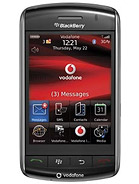
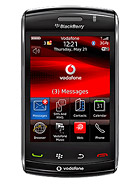
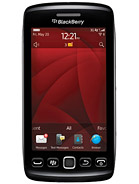

BlackBerry Storm 9500 • BlackBerry Storm2 9520 • BlackBerry Torch 9850 • BlackBerry Torch 9850
A couple of years later the company tried another approach - the Bold Touch series kept the hardware QWERTY keyboard, but added touch support to the display. These ran BlackBerry OS 7, the last version that was part of the original lineage. But even with this one the touchscreen was underutilized. Not that the 2.8" landscape display could offer the same versatility as the all-touch smartphones of 2011. There were a few more all-touch models from the Curve and Torch series, but they didn't strike it big either.
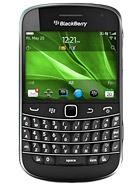
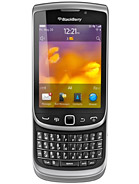
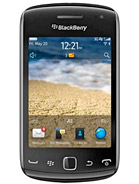
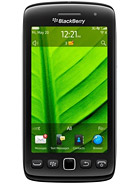
BlackBerry Bold Touch 9900 • BlackBerry Torch 9810 • BlackBerry Curve 9380 • BlackBerry Torch 9860
With version 7 a dead end, the company focused its attention on BlackBerry Tablet OS. It was based on the recently-acquired QNX and was designed for touch-only operation. As you can guess from the name, it made its debut on a tablet in 2010, the BlackBerry Playbook, specifically.
Other than a 3G version in 2011 (never mind the "4G" in the name, HSPA is 3G) and a proper 4G LTE version in 2012, BlackBerry never made another tablet. But the tablet OS lived on, at least partially.
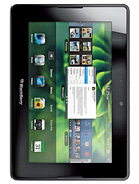


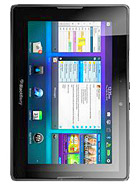
BlackBerry Playbook • Playbook Wimax • 4G Playbook HSPA+ • 4G LTE Playbook
The BlackBerry 10 OS that we mentioned earlier, the one that arrived with the Z10, was also based on QNX and improved on ideas from the Tablet OS (in fact, the Playbooks were updated to 10).
Side note: QNX is a real-time operating system, meaning it is suitable for use cases that require fast, reliable responses from the software. This is why it has been used in car infotainment systems and even advanced driver-assistance systems (ABS, adaptive cruise control and so on). Ford Sync 3 and 4/4a were based on QNX.
Anyway, alongside the Z10 came the BlackBerry Q10 - technically the mid-range offering in the series, the QWERTY-packing phone also acted as a back up in case this latest all-touch BlackBerry attempt failed like before. A few months later came an even cheaper version, the Q5.
The pinnacle of this series was the Z30 from late 2013, which added a larger display (5.0" AMOLED) compared to the Z10, a faster Snapdragon S4 Pro chipset, larger battery and other improvements.
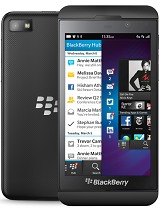

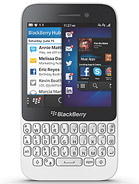
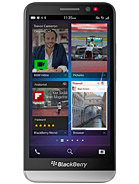
BlackBerry Z10 • BlackBerry Q10 • BlackBerry Q5 • BlackBerry Z30
We'd like to spend a bit longer on the BlackBerry Passport because this is one of the strangest devices that the company ever made. How many smartphones with a square 1:1 display can you think of? We can name a few (e.g. the Q10 and Q5 above), but none that are this large. And with good reason, at 90.3 mm this phone was unbearably large. What's even worse is that the 4.5" display wasn't even all that big, it had less surface area than the Galaxy S5 display.



The sizeable BlackBerry Passport
Of course, there was a QWERTY keyboard below the display. It was quite wide, giving you plenty of room for two-thumb typing. But it was also "small" in the sense that besides the 26 letter keys, it only had Space, Enter and Delete. For numbers you had to rely on the touchscreen. BlackBerry's word suggestion engine was excellent, by the way, and it used a clever trick.

The keyboard was touch-sensitive, meaning that you could use it as a touchpad move the text cursor. As for the word suggestions, you could swipe up on the keyboard below the desired suggestion to accept it.




The numpad was on the screen • Word suggestions • BlackBerry Messenger
The Passport was a unique design that enabled - nay, required - two-handed use. It was almost more of a tablet than a phone in this way. However, despite that and the clever features like the touch-enabled keyboard, the phone didn't do well on the market.
We want to look at one more model - the BlackBerry Priv. It was the first BlackBerry to run Android and in a way the last BlackBerry. The DTEK50 and DTEK60 that came the following year were co-developed with TCL and for the models after that TCL handled the hardware design and manufacturing by itself (in fact, the DTEK60 was a modified version of TCL's Alcatel Idol 4S).




The BlackBerry Priv was much more reasonable in its design and dimensions
Back to the Priv. It was the Passport done right - it had a 5.4" AMOLED display with a traditional 16:9 aspect ratio (vertical) and a slide-out QWERTY keyboard. At 77.2 mm it wasn't exactly narrow, but you could hold and use it with one hand.
Also, while the BlackBerry 10 OS had support for Android apps, that feature never worked quite right (and you had to rely on third-party stores like the Amazon Appstore). Now running actual Android (5.1 Lollipop, specifically), the Priv had full access to the Google Play Store. And it had BlackBerry security and services, but those no longer held the same appeal as in the company's heyday.




The Priv ran mostly stock Android with some BlackBerry apps ported over
The OS was mostly stock, though the company tried to port some of the best features of its defunct OS, including the BlackBerry Hub. It aggregated calls, texts and BBM messages into one app, but since the world had moved on to WhatsApp and other IM apps, the Hub felt a lot less powerful and essential.
Once upon a time, many of your colleagues and friends would be reachable on BBM, the BlackBerry Messenger. But since that was tied to BlackBerry phones, it suffered from their declining market share. And by 2013 when BBM was released for iOS and Android, running on non-BB hardware for the first time, it was already too late - the network effect had collapsed.
The writing was on the wall - BlackBerry and TCL parted ways at the end of August 2020 and that marked the end of BlackBerry phones. For now, at least. A company called Onward Mobility has been promising to make new BlackBerry phones - with QWERTY keyboards, of course - but so far we haven't seen any actual hardware and the expected 2021 launch didn't come to pass.
So, for now we're left with memories of the classic BlackBerry phones, some excellent, others too strange to succeed. And the Android-powered BBs, of course, those still work, though we can't remember the last time we've seen one in person.
Related
Reader comments
- The Atif
- 11 Feb 2023
- 6PT
There is always a difference between "Brand" and "Lifestyle". For example, "Apple", "Samsung", "Motorola", "Sony", "HTC", "Google" are "Brands", like ...
- Anonymous
- 24 Jan 2023
- 3%$
I'm texting now with a BlackBerry key2, and before that I had a BlackBerry key1 and a passport. My sister has a BlackBerry passport and still works like day1
- arkenoi
- 18 Sep 2022
- 0B7
but that's BS. you still can call and access the internet on bb10 as before.








 Xiaomi
Xiaomi Samsung
Samsung Samsung
Samsung Sony
Sony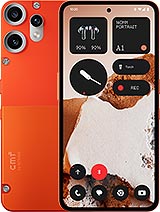 Nothing
Nothing


